Defensive organization in football is less about chasing the ball and more about controlling space collectively. A key principle that underpins compact defending is the idea of occupying three of the pitch’s five vertical lanes: the two wide corridors, the two half-spaces, and the central lane.
The aim is simple: by keeping the entire team within three lanes, players gain clear reference points for positioning, the team remains compact, and the opposition is forced into less dangerous zones. This principle doesn’t dictate a rigid structure, but rather offers a framework that players can use to orient themselves relative to the ball, teammates, and opponents.
Why Defending in Three Lanes Works
Compactness First
The greatest defensive strength a team can achieve is compactness. Shorter distances between players make support automatic: one presses, another covers, a third provides balance. Defending in three lanes enforces this compactness horizontally, reducing gaps for opponents to exploit.
Reference Points for Players
Instead of every player interpreting situations individually, three-lane defending gives a shared reference: “Wherever the ball is, we shift so that our team occupies only three lanes.” This makes defending collective, coordinated, and predictable.
Denying Dangerous Spaces
Central lanes and half-spaces are where the majority of dangerous attacks originate. Staying within three lanes ensures those zones are always protected, funneling opponents toward the wings where chances are lower quality and easier to defend.
Lane Shifts: How Positioning Adjusts
1. Ball in the Central Lane
The “default” defensive compactness:
- The team occupies central lane + both half-spaces.
- This closes vertical passing options into forwards or attacking midfielders.
- The wide corridors remain free, but the block is ready to shift if the ball moves outward.
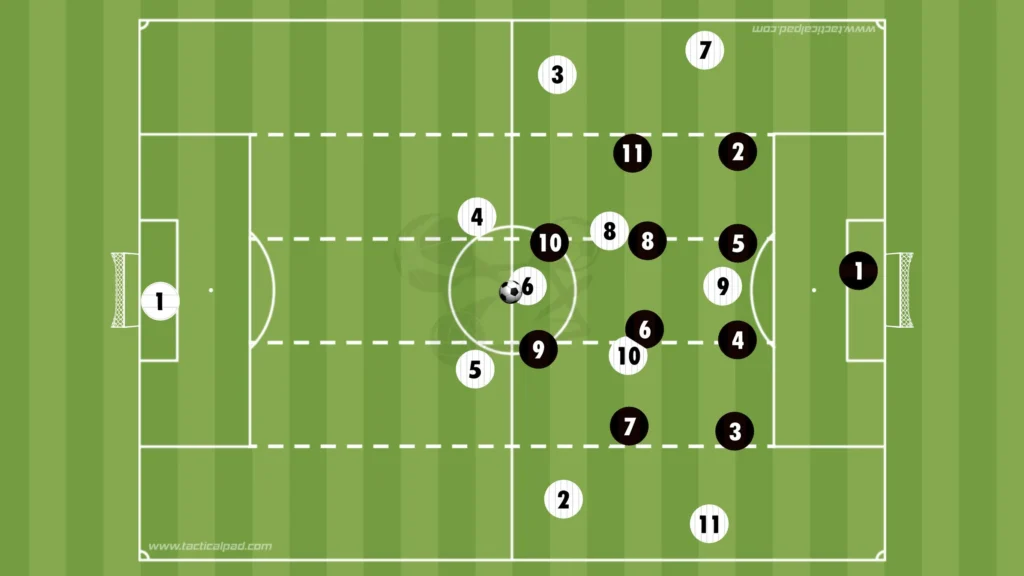
2. Ball in the Wide Corridors
When possession moves into the wide corridors:
- The three occupied lanes are wide corridor, near half-space, and central lane.
- The near winger and fullback press aggressively, while the midfield tucks in to prevent inside combinations.
- The far side stays open, but compact shifting keeps distances manageable if the opponent switches play.
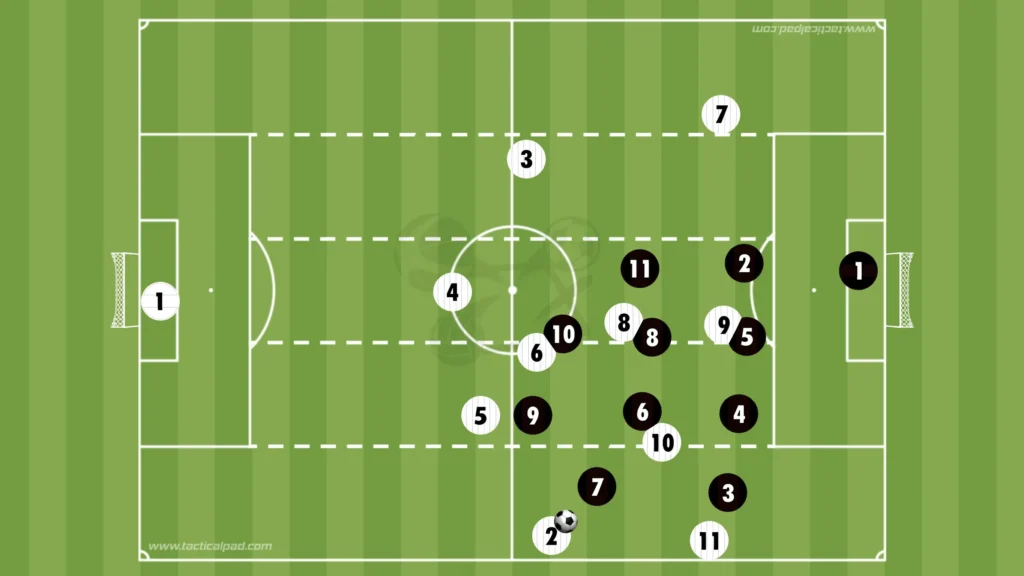
This is where reference points help: players know not to drift too far toward the touchline but instead to stay within the block, forcing the opponent either backward or into predictable wide play.
3. Ball in the Half-Spaces – A Grey Zone
When the ball enters a half-space, compactness becomes more nuanced.
- The team usually closes that half-space, the central lane, and the near-side wide corridor.
- However, this is a grey area: in certain cases, one or two players may remain in the far half-space to prevent switches or to keep more control of a dangerous opponent.
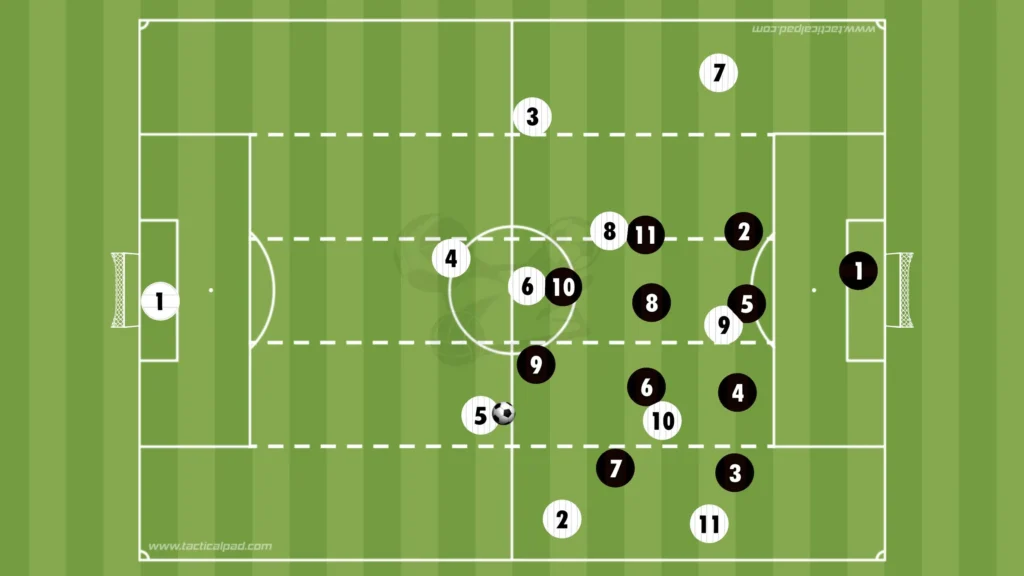
This balance depends on the opponent’s quality. Against weaker sides, overloading the ball side may be safe. Against elite passers, leaving the far half-space totally open can be too risky.
Advantages of the Three-Lane Principle
- Clear Orientation – Players always know which lanes must be filled, reducing confusion.
- Maximum Compactness – Horizontal distances shrink, strengthening cover and support.
- Forcing Predictability – By cutting off central and half-space access, the opponent is funneled wide.
Risks and Limitations
- Switches of Play – Leaving two lanes open invites long diagonal passes, especially from high-quality playmakers.
- Crossing Volume – Forcing play wide increases reliance on strong box defending.
- Requires Cohesion – If one player drifts out of the compact block, the structure collapses.
Example: Arsenal’s 4-4-2 Mid/Low-Block
When Arsenal defend in their 4-4-2 mid/low-block:
- Central possession: the players close both half-spaces and the central lane.
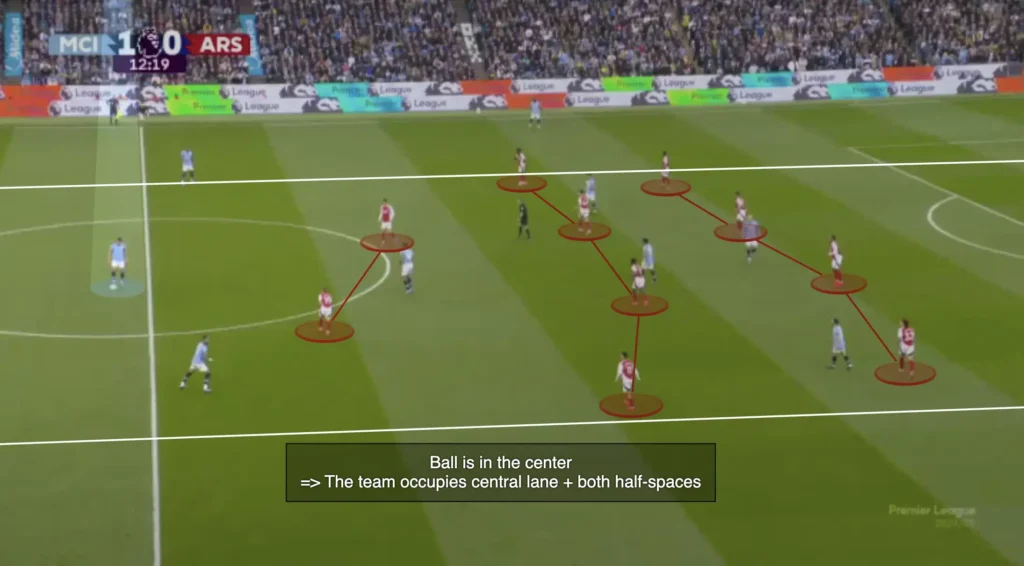
- Half-space: the block slides across with the far-side winger and fullback tucking inside to the central lane.
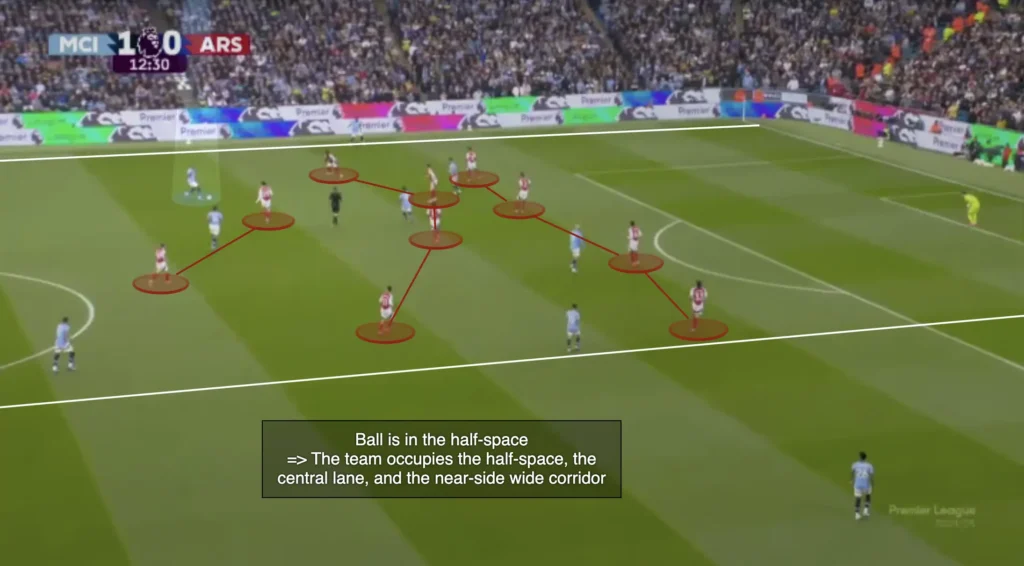
- Wide corridor: the near winger presses, fullback supports, while the midfield tightens the half-space.
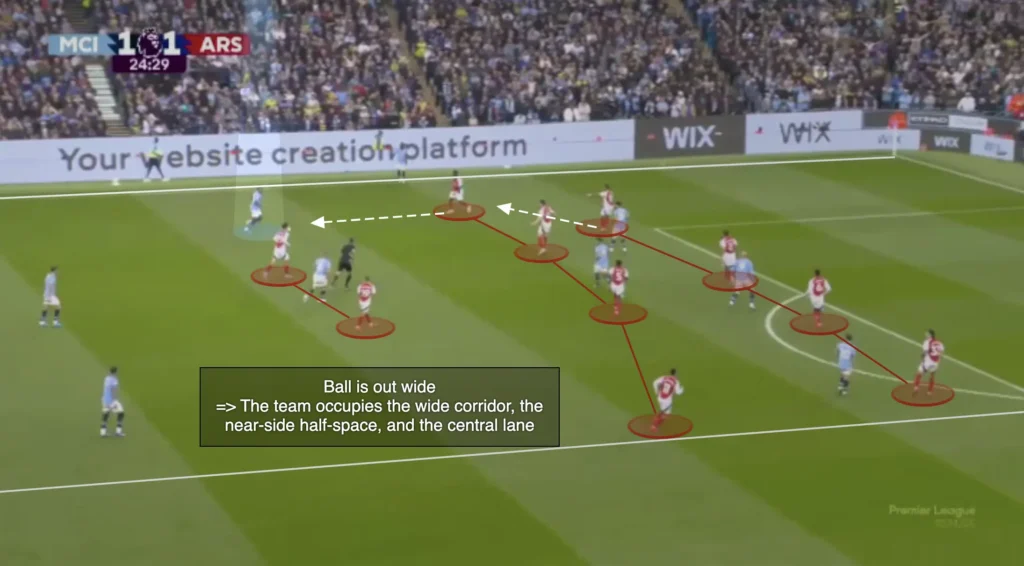
Here, defending in three lanes not only keeps the block compact but also gives every player clarity on their positioning relative to the ball.
Conclusion
Defending in three lanes is not about rigidly locking players into positions — it is about giving the team reference points to maintain compactness. By staying within three vertical lanes, teams deny the most dangerous central spaces, shorten distances between players, and create predictable defensive situations.
The principle requires constant collective shifting and clarity about how to handle the “grey zone” of the half-spaces, but when executed well, it forces opponents into low-quality attacks.
For coaches, analysts, and scouts, recognizing three-lane defending is a key step in evaluating how disciplined and compact a team truly is. In modern football, compactness wins games — and the three-lane principle provides one of the clearest frameworks for achieving it.
